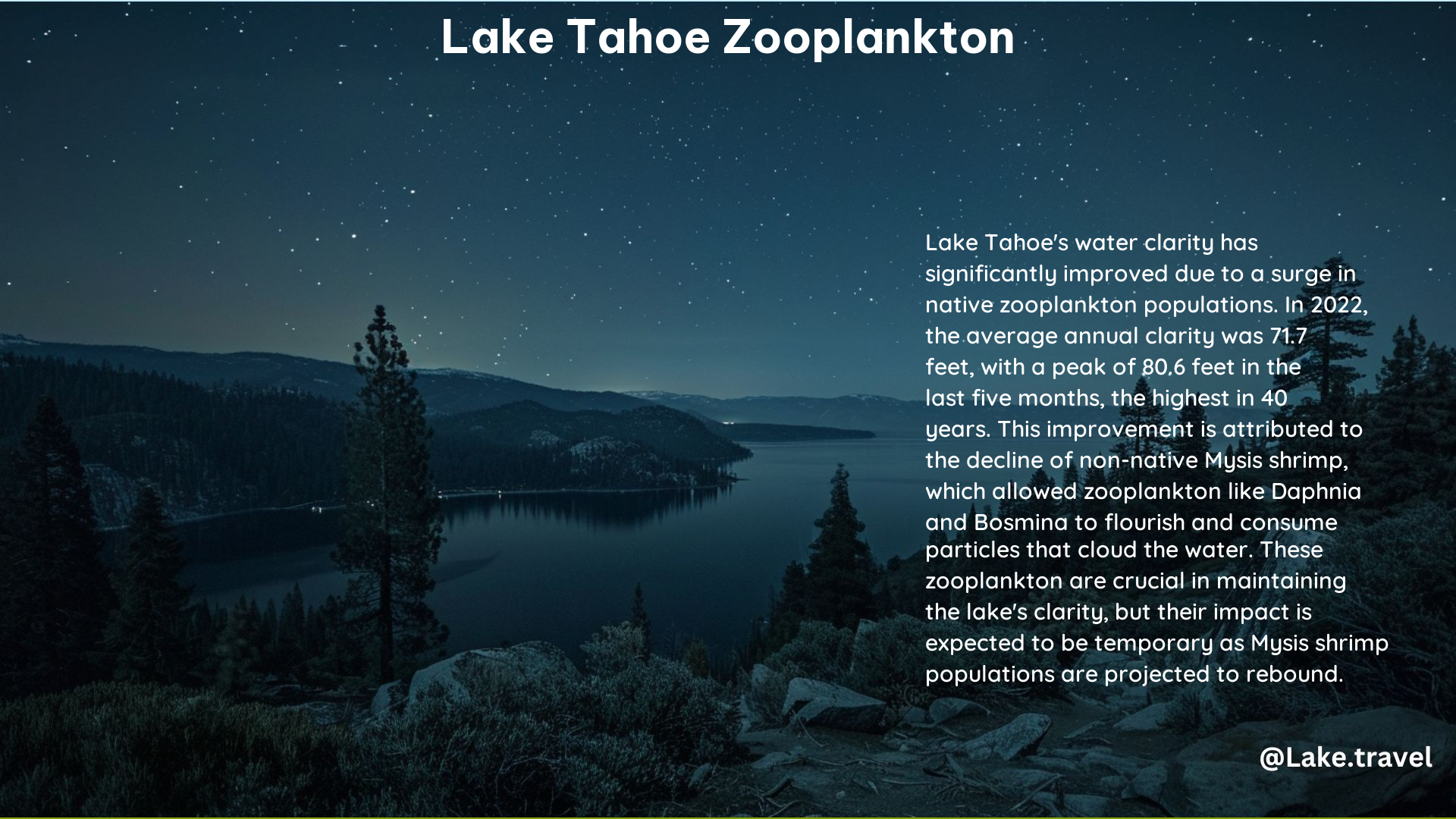Lake Tahoe’s exceptional water clarity is largely attributed to the presence of zooplankton, particularly the Daphnia and Bosmina species. These tiny organisms play a crucial role in maintaining the lake’s clarity by consuming minute particles like phytoplankton, effectively acting as nature’s cleaners.
The Role of Zooplankton in Lake Tahoe’s Ecosystem
-
Consumption of Particles: Zooplankton, especially Daphnia and Bosmina, feed on fine clay particles and small phytoplankton, enhancing the lake’s transparency. These microscopic creatures act as natural filters, removing suspended particles from the water column and improving the overall clarity.
-
Food Web Dynamics: The decline of invasive Mysis shrimp, which prey on native zooplankton, has allowed the Daphnia and Bosmina populations to thrive. This shift in the food web dynamics has led to a significant improvement in water clarity, as the native zooplankton can now effectively consume the particles that would otherwise cloud the lake.
-
Ecological Balance: Zooplankton are a key component of the lake’s food chain, affecting organisms both above (fish) and below (algae) them through predator/prey relationships. By maintaining a healthy balance in the ecosystem, zooplankton play a vital role in preserving the overall health and clarity of Lake Tahoe.
The Impact on Lake Clarity

-
Record Clarity: Lake Tahoe’s water clarity reached levels unseen in 40 years, with the Secchi disk visible at depths exceeding 80 feet in recent months. This remarkable clarity is a testament to the important role played by zooplankton in the lake’s ecosystem.
-
Short-Term Improvement: The current clarity milestone is expected to be temporary, as the return of invasive Mysis shrimp could potentially revert the lake’s water clarity to previous levels. This highlights the delicate balance of the ecosystem and the need for ongoing monitoring and management efforts.
Management and Conservation Efforts
-
Monitoring Zooplankton Communities: Scientists are continuously monitoring zooplankton populations in Lake Tahoe to understand their impact on the lake’s clarity and overall health. This data is crucial for informing management decisions and developing strategies to maintain the exceptional water quality.
-
Controlling Mysis Shrimp: Future management strategies should focus on controlling the Mysis shrimp population, as their predation on native zooplankton can have a detrimental effect on the lake’s clarity. Effective control measures could help sustain the improved clarity levels.
-
Erosion Control and Pollution Reduction: Efforts to limit pollution, sediment, and fine particles entering the lake are crucial for maintaining its health and clarity. This includes initiatives to reduce erosion, manage stormwater runoff, and promote sustainable land-use practices in the Lake Tahoe basin.
Key Statistics and Data Points
| Metric | Value |
|---|---|
| Average Clarity in 2022 | 71.7 feet |
| Clarity in the Last Five Months of 2022 | 80.6 feet |
| Historic Clarity Goal | 97.4 feet |
References
- NPR: Lake Tahoe’s Clear Water Is Due to Tiny Creatures Called Zooplankton, Researchers Say
- Smithsonian Magazine: Why Lake Tahoe Is the Clearest It’s Been in 40 Years
- UC Davis: Lake Tahoe’s Clarity Best It’s Been Since 1980s
- UC Davis: Zooplankton
- The Guardian: Lake Tahoe’s Clarity Reaches Highest Level in Decades Thanks to Tiny Creatures
